Case Study
Accessible Mobile Banking App For Older Adults


My Role
Target User
Tools
Client
Project Overview
This project aims to explore different design approaches to design a usable approach which leads to improvements in older adults’ performance and cognitive workload in using a mobile banking application.
The main focus of this project was to reduce older adults’ barriers to interacting with mobile banking apps by making the process easier and decreasing the room for making mistakes. On the other hand, diminishing the tasks’ workload was aimed during the research and design processes which caused improvement in their quality of experience.
PROBLEM DEFINITION
Since face-to-face interactions in physical bank branches are gradually being replaced by digital interfaces within websites and mobile applications, most mobile banking platforms need to be usable and accessible to people from various backgrounds. Although mobile banking apps are becoming increasingly prevalent, adoption rates among consumers aged sixty and older (the “older adults”) are relatively low compared to other age groups. One of the most critical barriers to utilising online banking lay in the fact that users did not know how to get started and that they found existing online banking confusing. According to reviewed studies, mobile applications are designed primarily for young people and professionals. Most older adults have difficulty using mobile banking apps on their smartphones without assistance. In the UK, mobile banking usage grew from 28% in 2017 to 41% in 2019, and it was predicted that this number would reach 72% by 2023. On the other hand, UK bank branches have declined continuously. As a result of this shift those individuals who cannot access mobile banking applications should visit branches in person, which may result in air pollution, extra time consumption, and additional workload on already overburdened branches. There is no doubt that user experience design significantly impacts the experiences that older people have when using technologies such as mobile applications.
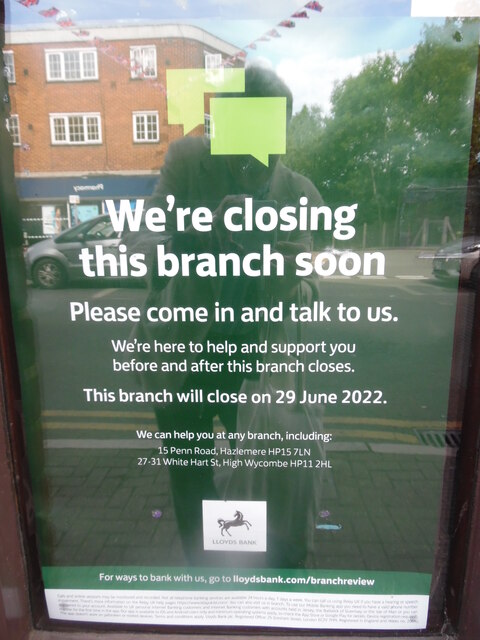

Process
This project needed much research as it was focused oparticulartain group of people. Defining a usable solution was only achievable by investigating the target users’ needs, habits, behaviour, goals and limitation.
In addition, the proposed solution had to be interactable by prototyping the concept for the purpose of usability testing.
The chosen approach had to be evaluated among older adult users to gather quantitative and qualitative data to find any improvements in their performance compared to the current mobile banking treand gathering users’ comments, thoughts and suggestions.
In order to achieve all of the mentioned objectives, the User-Centred Design approach has been taken to focus on the users.


Research
In order to investigate current studies, the most recent research in this field was reviewed through a wide range of scholarly articles, conferences and books. This was done through Google Scholar, IEEE Explore, and the BCU library databases. On the other hand, the user interface designs of three popular mobile banking applications in the United Kingdom (Lloyds, NatWest, and Monzo) have been reviewed to determine how these applications present features in a variety of banking tasks.
Literature Review
Many pieces of literature have been reviewed to explore the investigated approaches in terms of older adult interactions with digital platforms, especially mobile banking applications. The summary of findings can be mentioned in the following statements:
- Despite the increasing use of mobile phone applications among older adults, few studies have investigated how they use and interact with them.
- The research indicated usability issues associated with complicated functions, small buttons, multiple steps, and unnecessary features.
- Most current studies explored the impacts of colours, font sizes, etc., on older adults’ performance.
- A few studies found the current design guidelines helpful when designing for older adults.
- More age-related weaknesses were found by inconsistency, vague feedback, or layout issues, and older adults mostly failed when they had to solve complicated tasks and lack of appropriate feedback.
- The studies indicated that older adults tend to avoid the scroll function because it is a complicated task.
- According to the findings of reviewed studies, overcoming physical issues is less complicated than overcoming cognitive issues.
User Research
I had set a couple of aims in mind before conducting user research.
- To understand the reasons why people use a mobile banking application.
- To identify their frequency of mobile banking usage
- To determine their mobile banking knowledge
- To comprehend their prefered and desired banking methods
I developed a survey using SurveyMonkey. Participants were asked to state their frequency in using mobile banking applications from the options of very rarely (once per month or less), rarely (two to three times per month), occasionally (two to three times per week) and frequently (one to two times per day). They were also asked to rate their expertise in mobile banking applications on a scale from 1 to 5. The participants were given the options of banking in person, online banking, and banking via mobile applications, and they were asked to select their preferred and most desired method. In addition, information regarding their ages and occupations was compiled.
Personas
The presented persona is developed to illustrate a picture of the target user when mapping and designing the final solution to clarify the user’s character, obstacles, behaviour, needs, goals, limitations and motivations based on the literature review and user research.
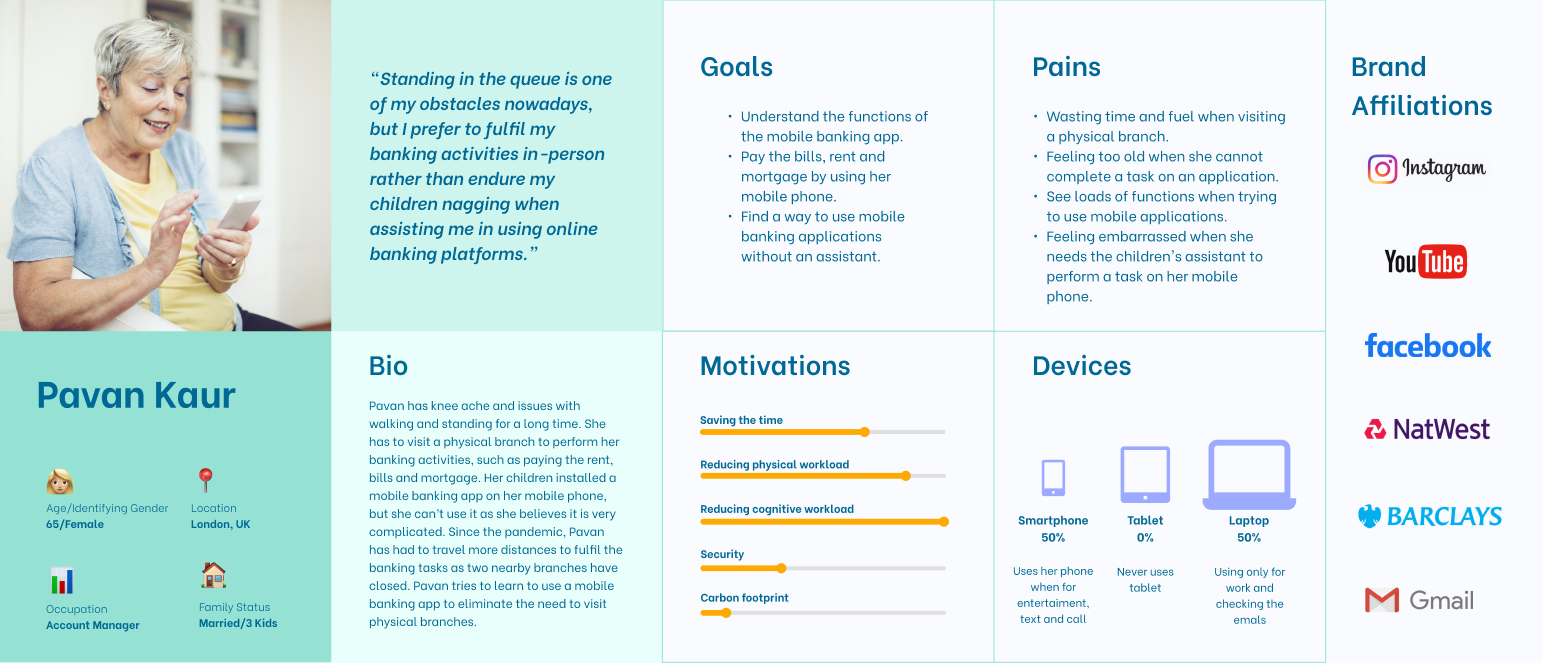

Design
Based on the current studies and user research results, it was found that older adults mostly failed when they had to solve complicated tasks. On the other hand, user research showed that older adults mostly do not know where they should start a task when performing a bank task using a mobile banking application.
It was hypothesised that presenting each primary action on a single screen can improve older adults’ performance and reduce their cognitive workloads compared to the current mobile application trend of offering multiple primary actions per screen.
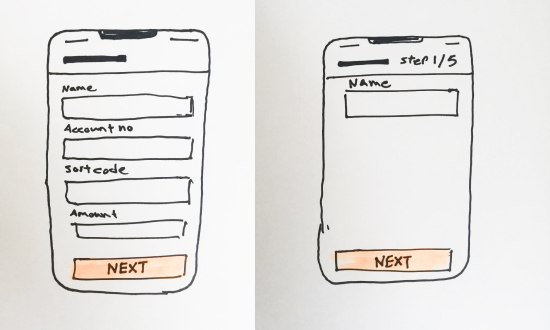

Experimental Environment
The experimental environment involved designing two prototypes based on the manipulation made containing ninety-four screens. The first version was designed similar to the current mobile banking applications trend, including multiple primary actions per screen.
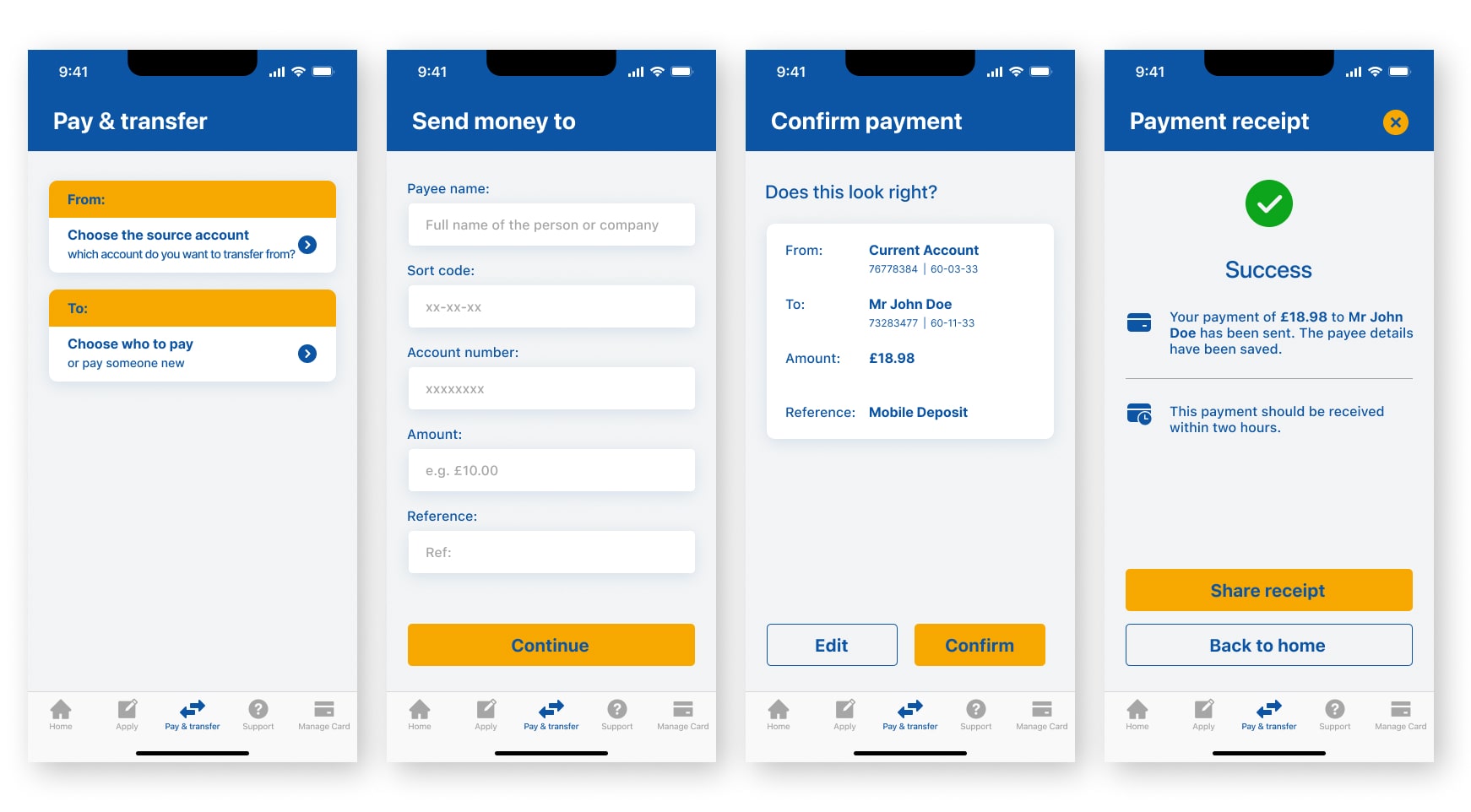


An example of multiple primary actions per screen condition
The second version of the prototype developed entirely identical to the first version apart from the distribution of the primary actions. The primary actions were divided into different single screens.



An example of single primary action per screen condition
Scenarios
Three different tasks were defined to be performed by participants in each prototype, including:
- Transfer the amount of £18.98 to someone new from the current account
- Deposit a cheque into the current account
- Send the amount of £50 to someone in Austria (outside the UK).
For each task, two different prototypes were designed to be performed by the participants in both conditions of single and multiple primary actions per screen.
Task 1:



Transfer the amount of £18.98 to someone new from the current account (Multiple primary actions per screen)



Transfer the amount of £18.98 to someone new from the current account (Single primary actions per screen)
Task 2:
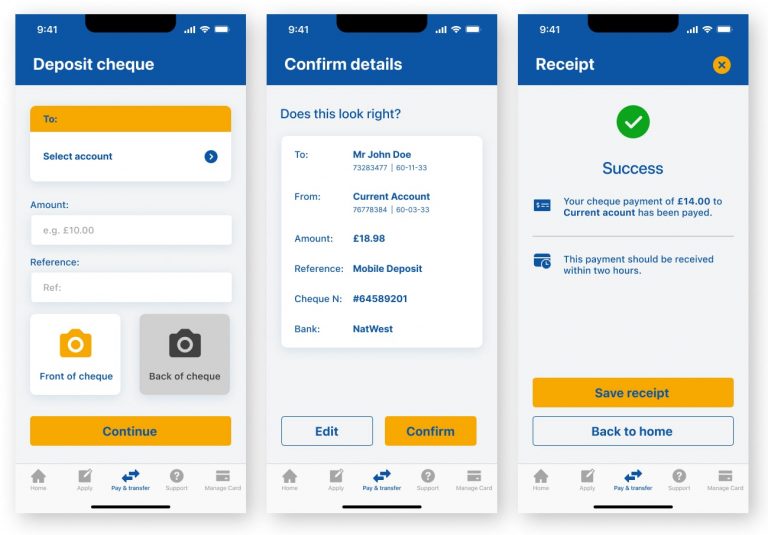

Deposit a cheque into the current account (Multiple primary actions per screen)


Deposit a cheque into the current account (Single primary actions per screen)
Task 3:
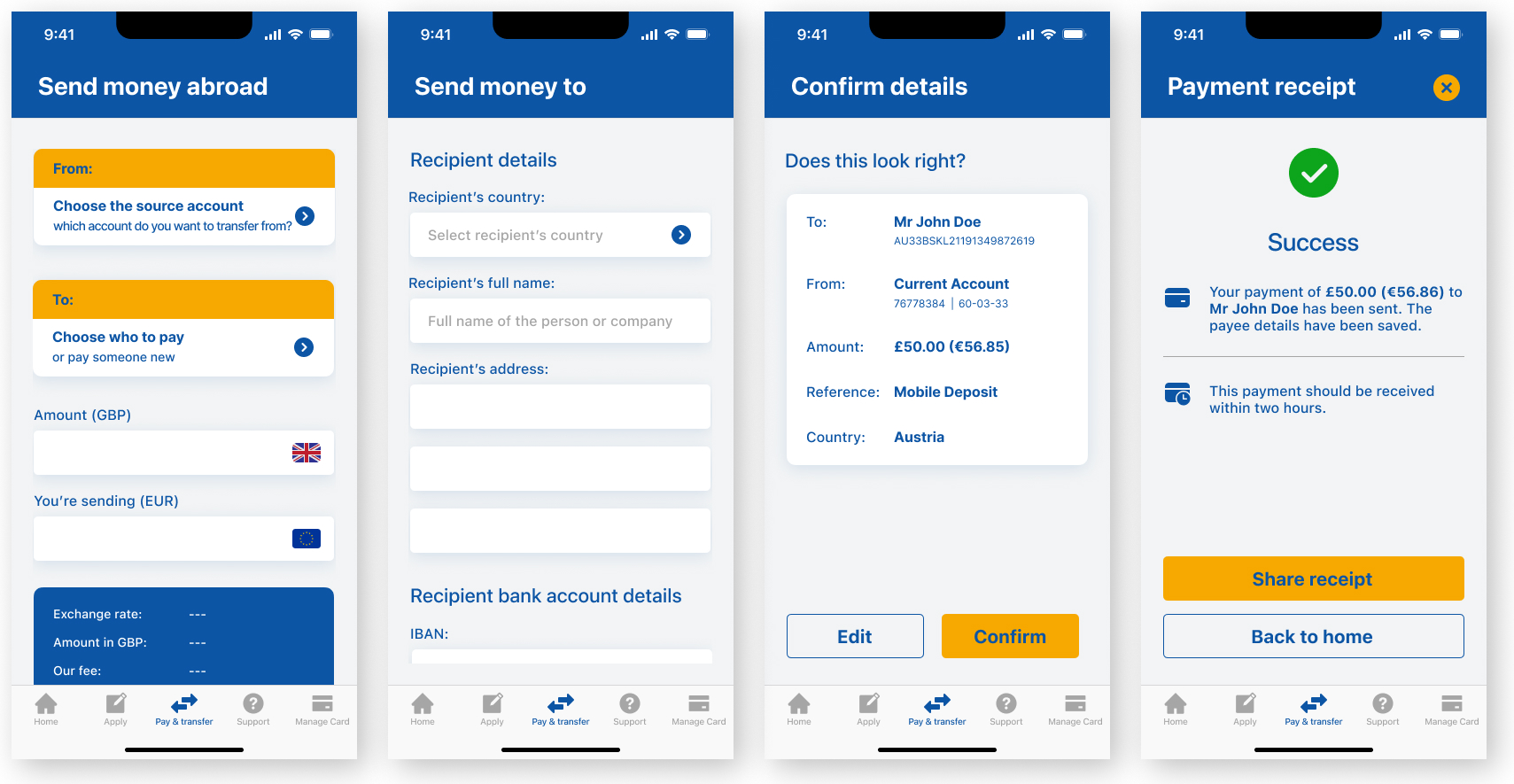

Send the amount of £50 to someone in Austria (Multiple primary actions per screen)


Send the amount of £50 to someone in Austria (Single primary actions per screen)
Test
As discussed above, the main aim of this project was to design a new user interface approach to improve mobile banking applications’ usability for older adults, leading to better performance. So, task completion time (TCT) was chosen as a variable to compare the older adults’ performance in each condition.
On the other hand, based on the research mentioned earlier, cognitive barriers to the digital environment significantly impact the adoption rate of mobile banking applications among older adults. So, the mental workload was chosen as a second variable for the purpose of this study by using NASA Task Load Index (NASA-TLX) questionnaire.
Participants
Fifteen senior adults aged between 60 and 74 of both genders (nine males and six females) were recruited from family, friends’ family and social media users (Linkedin and Facebook) for this project. Inclusion criteria included being sixty years or older, owning a smartphone, and at least being the user of one mobile banking application.


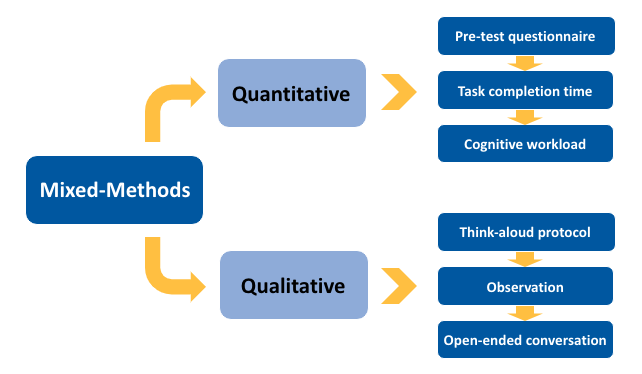

Summary of accustomed UX research method
Data collection and analysis
The quantitative and qualitative data were organised and analysed once it has been collected from the test sessions. The results of the users’ task completion times in each prototype were calculated using a paired sample T-test to find any significant differences in the performance of older adults when interacting with the proposed solution. To find an answer to the second research question, the data collected from the NASA-TLX questionnaire were analysed using a separated paired-sample T-test. This test aimed to determine whether or not there were any significant reductions in the amount of mental workload required to complete the tasks. The users’ comments, thoughts and observations resulting from the think-aloud protocol were concluded for future development and to understand users’ insights.
The Results/Findings
The results of the pre-test survey, task completion times and NASA Task Load Index were organised after the test sessions had been completed to be statistically analysed. The result of pre-test questionnaire showed that 40% of the participants use mobile banking applications occasionally, 26.6% frequently, and 13% rarely. Only three participants (20%) mentioned that they rarely use mobile banking applications.


Summary of recruited sample group


Participants experience in mobile banking


Participants banking method preferences
In terms of mobile banking knowledge, 33.3% of the participants stated that they are beginners and 20% of them defined themselves as competent in using mobile banking applications. 20% of the participants found themselves proficient, similar to the expert population. Only one participant selected the novice option (6.6%). Regarding to preferred banking method, 33.3% of the participants mentioned that they usually perform their banking activities using a mobile banking application, while 53.33% visit the branches for banking activities. Only two people (13.3%) mentioned that they use online banking through the banks’ websites.
Users' Performance


The result of a paired sample T-test confirmed that there is a highly statistically significant improvement in task completion time (TCT) from 211.91 ± 13.26 (multiple primary actions per screen) to 160.48 ± 13.07 (single primary action per screen) t(14) = 15.16, p < 0.001. The test result confirmed that we can accept our hypothesis with 95% confidence, indicating that participants completed the tests significantly faster in the condition of single primary action per screen layout than in the multiple primary actions per screen layout
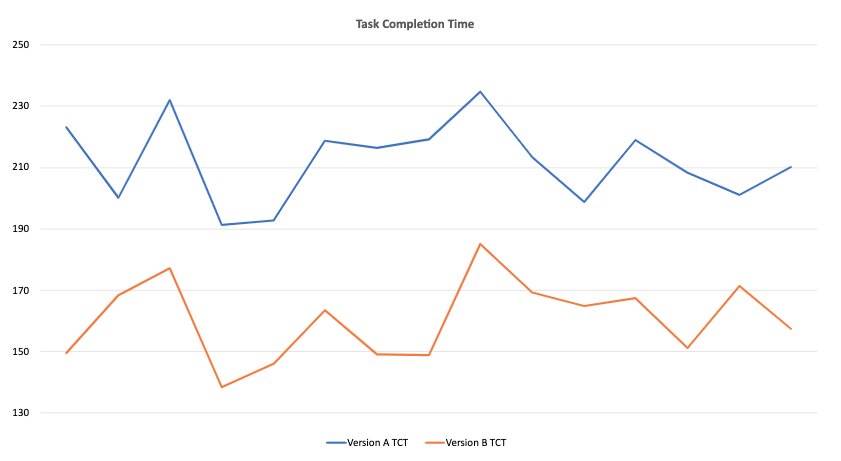

Users' Task Completion Time (TCT) diagram


NASA-TLX group weighted scores in both conditions
Users' Mental Workload


A NASA Task Load Index (NASA-TLX) questionnaire was used to measure the tasks workloads for each round of the test, specifically mental workload and the results showed there was a statistically significant decrease in older adults’ mental workload in performing presented tasks from 27.6 ± 15.6 (multiple primary actions per screen) to 12.0 ± 7.5 (single primary action per screen), t(14) = 6.71, p < 0.001. Based on the statistical results, we can accept our hypothesis with 95% confidence, indicating that older adults completed the test with a less mental workload in the single primary action per screen condition than in the multiple primary actions layout.
Users' Insights
- All of the participants showed positive feedback regarding the proposed solution.
- Participants’ insights showed the impact of the distribution of primary actions on identifying the starting point of the task.
- Participants’ comments indicated the importance of users’ past experiences.
- Participants’ observations revealed that although one primary action condition can be frustrating, the usability would be higher.
- The proposed design was found consistent.
- Older adults are eager to adopt and use technologies to fulfil their banking activities.
- The scroll interaction is not the older adults’ favourite function.
- Single primary action per screen condition could decrease the user’s stress and decrease the chance of mistakes.
- Users’ locations can be more recognisable by presenting a single primary action per screen.
Conclusion of the results
- Taking the approach of single primary action per screen would improve older adults’ performance in using mobile banking applications compared to presenting multiple primary actions per screen.
- Using the interaction of single primary action per screen would decrease older adults’ cognitive workload compared to the multiple primary actions per screen interaction.
- In general, presenting each primary action on a single screen can improve mobile banking applications’ usability for older adults.
Conformance of the project
It can be claimed that the project’s outcome vastly meets the original aim and objectives as well as the research questions.
- The project’s aim was achieved as different primary action presentations in a mobile banking application were explored, and improvements in older adults’ performance and cognitive workload were investigated and recognised.
- The first research question was answered as the improvement of older adults’ performance using the single action per screen approach was evaluated.
- The second research question was answered as the reduction of cognitive workload in using the single action per screen approach among older adults was evaluated.
- The first hypothesis was investigated and supported as significant improvement in older adults’ performance was observed in using single primary action per screen approach.
- The second hypothesis was examined and defended as a significant difference in older adults’ cognitive workload was observed using multiple and single primary actions per screen approaches.